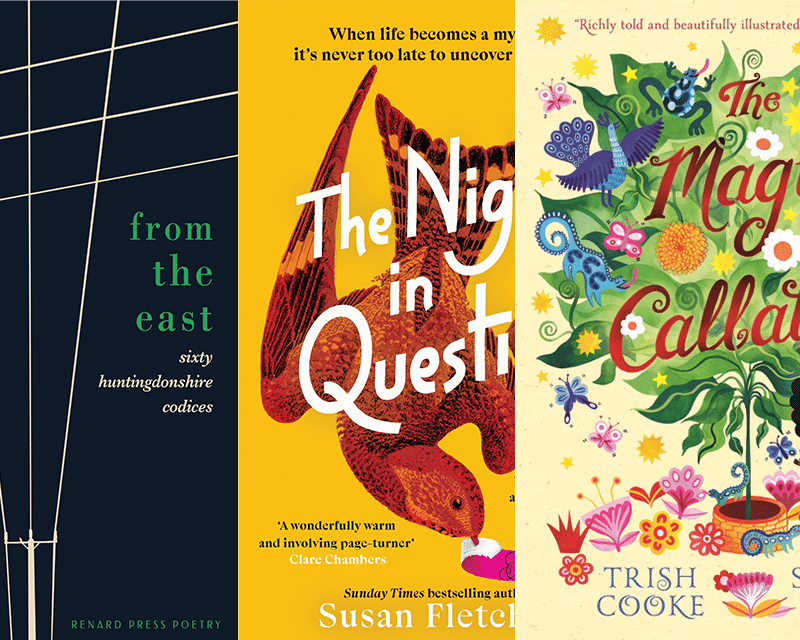- Collected
- Article
Why Bother With Ayn Rand?
The influence of a cult right-wing novelist

- 27 June, 2016
- Anita Mason
On the European side of the Atlantic, Ayn Rand doesn’t have much of a public. Few people can even pronounce her name. I first encountered her in a flaky BBC documentary: eyes like searchlights under a flapper haircut, well-groomed young men in attendance. The word ‘influence’ hung about. It was the 1940s.
I had no idea whom she had influenced or why I should bother. Later I sometimes glimpsed her in the London Review of Books: one of her volumes would be exiting a room under somebody’s arm, to a sneer from the columnist. Clearly, anyone reading Ayn Rand was mentally and morally deficient.
One day on Bristol’s Harbourside I saw a copy of The Fountainhead, the first of her two major novels. Inside, her work was described as ‘a celebration of life and happiness’ by Alan Greenspan. He was the chairman of the US Federal Reserve until 2006, just before the banks collapsed. The word ‘influence’ suddenly acquired weight. I bought the book. Twenty-four hours later, I was unable to put it down. Since its politics were ridiculous, its characters unbelievable and its love story tosh, this was embarrassing. I read on.
The Fountainhead was published in 1943. Its protagonist is a brilliant young architect, Howard Roark. Most of the book concerns his struggle to succeed, without compromising, in a world where mediocrity and conformism rule. The plot is complicated by an obscure conspiracy to promote bad art and by the perverse behaviour of the woman who loves him. Ayn Rand liked sexual triangles (and glamour, arrogance and men with cruel mouths). Fortunately The Fountainhead also has a wonderful villain in Ellsworth Toohey.
Toohey grows from a minor art critic to a giant with his fingers on the levers of the world. Soft-spoken and repulsive, he is out to destroy Roark, but his motivation is an enigma. He finally explains himself in an extraordinary speech, saying: ‘Look at Europe, you fool.’ He points out that ‘one country is dedicated to the proposition that man has no rights, that the collective is all,’ and another to the proposition that man has no rights, that the State is all. ‘Watch the pincer movement,’ says Toohey. ‘If you’re sick of one version, we push you into the other… Give up your soul to a council — or give it up to a leader. But give it up, give it up, give it up.’
In 1943, with America fighting Nazi Germany and finding itself on the same side as the Soviet Union, these words must have been electrifying. They are also, in their closing down of freedom to a choice between tyrannies, a perfect expression of paranoia. So who, I wondered, was Ayn Rand?
She was born Alisa Rosenbaum in 1905 to a bourgeois family in St Petersburg. In 1917 her father’s business was expropriated by the Bolsheviks and the family fled to Crimea, only to return to an impoverished existence in St Petersburg (now Petrograd) when Crimea, too, fell to the Reds. Ayn Rand left Russia as soon as she could, sponsored by cousins in Chicago. She never returned. She changed her name (‘Ayn’ rhymes with ‘mine’; she was evasive about its derivation but it may come from the childish appellation ‘Ayin’, a Jewish diminutive meaning ‘bright eyes.’ ‘Rand’ has never been explained.)
In America she set about learning English, and embraced the country as her spiritual home. Her ambition was to write: she moved to Hollywood, where she found work initially as an extra. After various attempts at screenplays, she began writing We the Living, a thinly fictionalised autobiography which bitterly portrays life under Soviet rule. It was published in 1936 and fell on stony ground. The Roosevelt administration had responded to the Depression with the New Deal, which established Government regulation, collective bargaining and welfare programmes. Here was the face of the collectivism so feared by Ayn Rand. She set to work on The Fountainhead with the zeal of a fanatic.
Unfortunately, the fact that The Fountainhead was a polemic about heroic individualism was missed by most readers, who thought it was a novel about architecture. It struck a chord on the American Right, which agreed with her about the danger posed by the expanding state. A few political thinkers were pursuing the same line: The Fountainhead came out within a year of Friedrich von Hayek’s The Road to Serfdom, later a founding neoliberal text and a profound influence on Margaret Thatcher. At the time, however, the Right had little sway and Rand was exasperated by popular misunderstanding of her book. She had begun researching Atlas Shrugged.
The Fountainhead ran to some 700 pages; Atlas Shrugged would make more than 1100. Much of this novel revolves around a railroad, the Taggart Transcontinental, run brilliantly by Dagny Taggart — although her incompetent brother is nominally Chief Executive. The problems confronting Taggart mirror those across the nation. Nothing works any more. People don’t do their jobs. Incompetence is deemed a virtue, and the capable are – literally – vanishing.
The obscurity that in The Fountainhead surrounds the motivation of Ellsworth Toohey is, in Atlas Shrugged, an element that pervades everything, a fog that seems to leach upwards from the tunnels beneath the city. We are in an alternative present and the whole world has been nudged sideways. Colorado is the only state where industry is still working properly, and the US is the only country untouched by a global calamity which has turned most other countries into ‘People’s States’. Dagny’s unflagging attempts to get steel for her railway are only the start. Government directives, cosy anti-competitive deals, a mountain of pettifogging restrictions — all have to be battled. Then copper becomes unobtainable. Finally coal goes, and the skies over America start to grow dark.
Here, as in The Fountainhead, the suspense boils down to the baffled question, ‘What on earth is going on?’ Atlas Shrugged has the makings of a powerful work of dystopic fiction; it is impressively researched and at times even thrilling. However, it is driven by an idea rather than a plot. The idea is Capitalism: unrestrained, glorious and, for Rand, the sole source of freedom.
By the time Atlas Shrugged was published in 1957, the New Deal was old politics. The Fountainhead was selling robustly and had been made into a Hollywood film. The public was ready for a gripping story (with glamorous heroine and sexual triangles) about the catastrophic results of Government interference with the economy. Atlas Shrugged sold 70,000 copies within two months and rose to fifth on the New York Times best-seller list.
The reviewers hated it. The Los Angeles Times suggested it was insane, and the New York Times said – perceptively – that it was ‘written out of hate.’ The arch-conservative National Review called it ‘a silly book’ and took violent issue with its atheism. ‘Is it a novel? Is it a nightmare?’, demanded Time.
Despite the reviews, her sales were soaring as the 1960s began. Within five years of publication, Atlas Shrugged had sold more than a million copies. It wasn’t just the strong plotting, the sex and the railing against Government. Rand had at last found a readership hungry for her ideas. The novels purveyed an intoxicating mix of idealism and anarchy, and she lectured to packed halls of students. Ayn Rand study groups appeared. She hosted regular radio talk shows. She became a cult.
The process owed a great deal to her disciple Nathaniel Branden. Rand had met Branden, then a college freshman, after the publication of The Fountainhead. He wrote her an awestruck letter and was invited to her home to meet her and her husband, the actor Frank O’Connor. A close relationship developed between Branden, his girlfriend (later wife) Barbara, and the O’Connors. The young couple introduced selected friends to Rand’s ideas; the circle met to hear Rand read from drafts of Atlas Shrugged and discuss them. Among members was the economist Alan Greenspan.
Rand considered Branden very gifted and proclaimed him her ‘intellectual heir.’ Together they turned her philosophical ideas into a system, which they called Objectivism, since Rand’s basic philosophical position was that reality exists independently of consciousness and is objectively knowable by human beings. Branden set up a series of public lectures, after which Rand herself answered questions. These were popular; other lectures followed, and an Institute was created on the basis of them. An Objectivist Newsletter was founded, for which Rand wrote essays (collected as Capitalism: the Unknown Ideal and The Virtue of Selfishness). What, for years, no one but Frank O’Connor and Barbara Branden knew was that since 1954 Rand and Branden had been lovers. The triangles had caught up with her.
In 1968 everything fell apart. Branden had secretly started an affair with a younger woman. Incandescent, Rand removed his name from the dedication of Atlas Shrugged, forced him to resign from the Institute and newsletter, and publicly denounced him. The cult imploded.
Rand published little significant work after that, and no more fiction. However, the two hugely ambitious novels kept her ideas alive and those ideas were now moving closer to the mainstream. At the Chicago School of Economics, a fierce doctrine of laissez-faire capitalism had been gaining traction under Milton Friedman, a disciple of Hayek, who had moved in the same circles as Rand in the 1950s. It was readily mobilised into the rhetoric of the Cold War, was implemented – violently – in Chile, and its hour in the US came under Ronald Reagan. In Britain, Margaret Thatcher, who in some ways resembled Rand (combativeness, self-conviction, boldness), used it to set in motion radical economic changes.
How influential has Ayn Rand been? Some of her ideas were extreme. They include abolishing income tax, foreign aid and any institutionalised form of compassion. She insisted that selfishness (‘rational self-interest’) was the highest good and altruism a pernicious evil. There is an inevitable cruelty in such ideas, making politicians nervous of associating themselves with her (although former Australian PM Malcolm Fraser did). She was also completely intolerant of disagreement, which alienated many potential allies.
Rand died in 1982, but her ideas are still attractive to many. Senator Rand Paul and 2012 Republican vice-presidential nominee Paul Ryan acknowledge her influence. There are more than a hundred people on Wikipedia’s list of powerful ‘people influenced by Ayn Rand’ whose names are not familiar in the UK but are, presumably, in America. It is difficult to explain the rise of the Tea Party without her.
What accounts for this? She was not alone, particularly in her denunciation of state expansionism. But she had a weapon that the academic libertarians of the time, such as Hayek and Ludwig von Mises, did not: a direct line to the people. She entertained them. In 1991, in a poll sponsored by the Library of Congress, readers named Atlas Shrugged as the book (after the Bible) that had most influenced their lives.
People read Ayn Rand when they’re young. She is still in their heads when they’re middle-aged, running companies and standing for office. Ayn Rand is here. Look around.
You might also like:
No facts, only versions
Memoirs are as much about what is excluded as what is included. This edition examines how you can evoke the…
RLF Fellows’ News: April 2024
Publishing News RLF Fellow Trish Cooke’s new children’s book, The Magic Callaloo, is set to be published by Walker Books…
Susan Fletcher on outsiders in fiction – literal and imagined
I’ve always known that I’ve preferred to be outside. To be an outsider – literally, and, specifically, amongst wild places…


